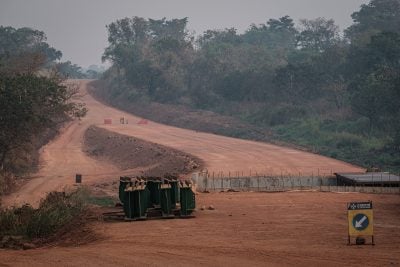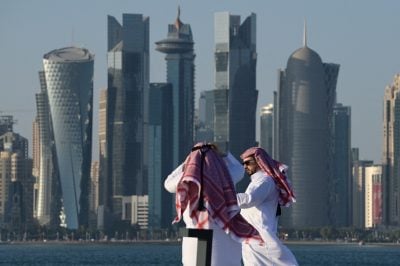Africa has long struggled to find its place within the global pharmaceutical industry. International drugs manufacturers rely on massive revenues to help fund research and development (R&D), while also generating a profit for their shareholders. Yet, with some notable exceptions, there is a huge mismatch between African medical needs and the continent’s ability to pay. Donor support and Asian generic drugs have provided a partial, temporary solution, but a long-term answer must surely be found on the continent itself. The challenges are obvious.
According to World Health Organisation (WHO) figures, sub-Saharan Africa carries 24% of the global disease burden, far ahead of its share of global population, with tuberculosis, HIV/AIDS and malaria among the main culprits. HIV/AIDS is more prevalent in sub-Saharan Africa than elsewhere in the world but has affected enough people in the industrialised world to become a magnet for research funding. Anti-retroviral treatment to help combat the effects of HIV is now being distributed more widely in Africa thanks to the supply of lower cost drugs. It is sad but true that malaria and tuberculosis overwhelmingly affect poorer people and so attract less global R&D. Here too, however, some progress is being made in the fight against malaria thanks to donor funding for solutions that are widely known but which were previously less available.
It is not surprising that international pharmaceutical companies are increasingly looking to Africa to drive their global growth. A combination of economic growth and population increase is creating more consumers with more needs. It can be shocking to hear representatives of pharmaceutical companies talk of the commercial opportunities on offer in Africa but the industry is driven by private sector profit just like any other. The profile of African illness is also changing.
As more people live for longer, they become susceptible to so-called Western diseases, such as high blood pressure and asthma. Pharmaceutical companies are most interested in chronic illnesses that require ongoing medication over many years and so are beginning to invest more heavily in their African operations. The market is dominated by multinationals, such GlaxoSmithKline of the UK and French firm Sanofi. Local drug manufacture is concentrated in the two areas that account for most of the entire continent’s pharmaceuticals sales –North Africa and South Africa – while Indian and Chinese firms supply generic drugs when and where possible.
As their name would suggest, generics are licit copies of drugs that have previously been developed by other companies but which can be produced legally under international intellectual property law. Indian firms are particularly active in English-speaking parts of the continent, while Sanofi dominates in Francophone Africa. Chinese investment in other sectors, including hospital construction, often brings Chinese pharmaceutical contracts with it. African wealth is overwhelmingly located in urban areas and so pharmaceutical sales, marketing, access and consumption will remain concentrated in the continent’s biggest cities for many years to come. Two thirds of all drug sales in Angola, for instance, are made in Luanda.
Rising spending
Pharmaceutical spending on the continent stood at $18bn last year but is forecast to reach $45bn as soon as 2020. Many companies are banking on Africa following the lead of other emerging markets in Asia and Latin America.
Novartis chief executive Joe Jimenez says: “We’re thinking hard about what happens when those emerging markets start to slow because they are not going to continue growing at the rate that they’re growing forever; and a place where we’re putting a lot of our attention is Africa.”
The chief executive of French firm Sanofi, Chris Viehbacher, says: “Africa is becoming an extremely interesting market and we’ll continue to expand our commercial presence there.” His company plans to open its third Algerian factory in the near future at a cost of €70m. Portuguese firm Bluepharma set up a subsidiary in Mozambique last year to market its own generic drugs and provide pharmaceutical and hospital consultancy services in the country. A spokesperson for the company said: “The launch of Bluepharma Moçambique is a recognition of the African market as being strategic for expansion of the brand and the sale of its products, and it is likely that this will be just the first step towards consolidation of Bluepharma’s international positioning.”
As discussed later, there is general agreement that greater manufacturing capacity on the continent would ease supply. A wide range of stakeholders have swung their support behind the African Union’s (AU) Pharmaceutical Manufacturing Plan for Africa, while some R&D is now being carried out on the continent. Mozambique’s Polana Cancio Centre for Research and Public Health completed the country’s first HIV vaccine trial in March, as part of a joint trial with Tanzania. Ilesh Jani, the director general of Mozambique’s National Institute of Health, said: “We should be in the driver’s seat, not sitting in the back of the car waiting for someone to find the answer. We need to get involved and take leadership to find the solutions. Maybe we don’t yet have the capacity to develop these products in the lab, but we have the capacity to test them and accelerate discovery.”
Another missing part of the jigsaw in some countries is the lack of rural logistics networks. Air, sea and land transport connections between major cities on the continent are now improving year on year but most local distribution networks remain poor. Andrea Coleman, the chief executive of Riders for Health, an NGO that manages and maintains vehicles for health care in sub-Saharan Africa, says: “If we are going to tackle health care for millions of people across Africa we must first tackle the most basic elements of any health system: logistics, maintenance, local skills and communications. Isn’t it obvious that to have predictable and routine health care these must be in place? Otherwise, we are trying to build on sand or air or something equally insubstantial.”
As ever with African manufacturing, the lack of reliable infrastructure affects production. Constant water and power suppliers and integrated transport networks are needed if output is to be both predictable and timely. Coleman adds: “Until we put these fundamentals in place no routine public health, nor curative health, can be carried out predictably, cost effectively and reliably.
The millions of people living in rural Africa will remain the victims of distance and terrain: victims of a lack of appropriate infrastructure. “The incredible advances that have been made to medicine and health care in the developed world over the past 100 years have been based on continuous development, on marginal improvements, each one driving the next advance and each one building on the last, until we have reached the stage we are at now. In the case of development in Africa it seems like we are trying to implement the latest advance in medical technology on to a system that is not in a position to support them.”
Counterfeit drugs are also a significant problem. In some cases, the original active pharmaceutical ingredients (API) are adulterated to make them go further; others contain no active ingredients at all. Nigeria’s National Agency for Food and Drug Administration and Control (NAFDAC) has found drugs on sale labelled as antibiotics that actually contained maize flour. However, it estimates that the proportion of counterfeit drugs on the market fell from more than 40% in 2001 to 16.7% by 2005 and has fallen slowly ever since then. In common with other organisations on the continent, the NAFDAC uses mobile technology to check the authenticity of medicines. Consumers send a text message with the product serial number and place of purchase to the agency to check whether it is licit.
Want to continue reading? Subscribe today.
You've read all your free articles for this month! Subscribe now to enjoy full access to our content.
Digital Monthly
£8.00 / month
Receive full unlimited access to our articles, opinions, podcasts and more.
Digital Yearly
£70.00 / year
Our best value offer - save £26 and gain access to all of our digital content for an entire year!

 Sign in with Google
Sign in with Google 




